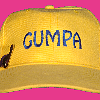I'm forever trying to describe my fixation on the waste stream. I can't get away from the core issue: most all our resources go into stuff, most all stuff ends up in the waste stream. So, after a brief interlude of use, the stuff and energy we extract from the earth is returned to earth, air and water in noxious forms.
Extract -> consume -> discard
Engineering and design which follow that pattern bring us closer to the point where there is not enough left to extract.
We convert the treasures of the earth into stuff, only to use the stuff to degrade the earth.
===============================
A better way to design would look to for materials and resources post-consume, so instead of depleting the earth, it is diverting the stream which degrades the earth.
When I've tried to frame what this might look like, I've ended up with the phrase 'solutions looking for problems', which implies an inversion. The waste stream is where our resources are, the materials we've invested engineering in. We need to extract from there.
===============================
I see a parallel to search technology. An index of a document identifies where words are. An inverted index identifies the documents containing a word. An index is easy; an author can index a book, it takes Google to tell us where all the documents are containing the word we are interested in.
A bill of materials tells us what resources we need to gather.
An inverted bill of materials would tell us what we can build with these resources.
A bill of materials is easy, the limited problem domain of the project defines the materials required. It's indexing a book.
An inverted bill of materials requests familiarity with all projects and processes, and the resources required by them. It's Google scale.
2014-02-17
Subscribe to:
Post Comments (Atom)

No comments:
Post a Comment